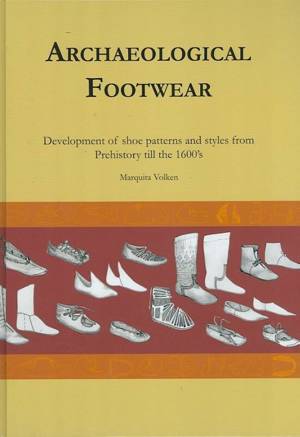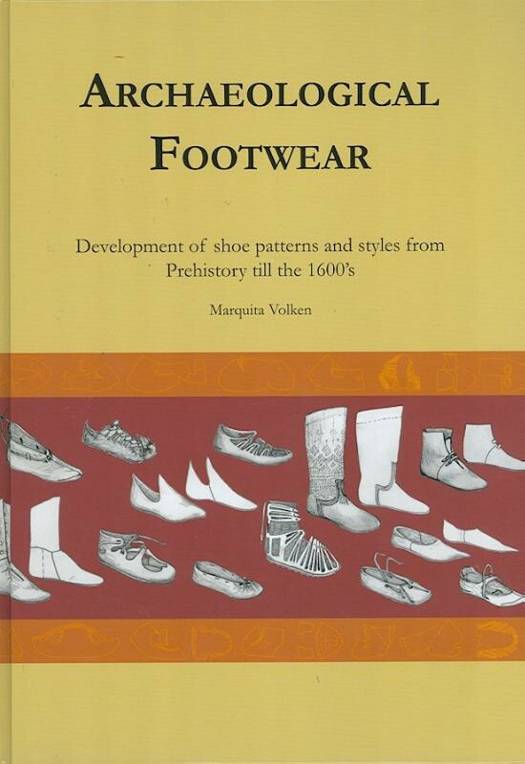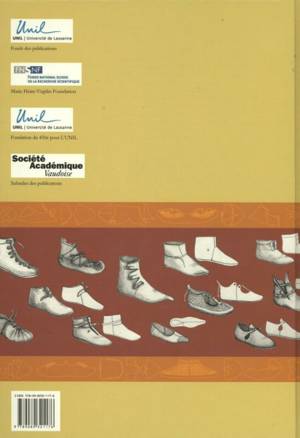
- Afhalen na 1 uur in een winkel met voorraad
- Gratis thuislevering in België vanaf € 30
- Ruim aanbod met 7 miljoen producten
- Afhalen na 1 uur in een winkel met voorraad
- Gratis thuislevering in België vanaf € 30
- Ruim aanbod met 7 miljoen producten
Zoeken
Archaeological Footwear
Development of Shoe Patterns and Styles from Prehistory Til the 1600's
Marquita Volken
Hardcover | Engels
€ 138,95
+ 277 punten
Omschrijving
The knowledge of how to make a shoe pattern was certainly the ancient shoemaker's most closely guarded secret, passed from master to apprentice but never written down.
Now, after 20 years of research, the principles for making ancient shoe patterns have been rediscovered.
This comprehensive guide to European archaeological footwear is richly illustrated with drawings and photographs of archaeological leather shoe finds and shoe reconstructions. A catalogue presents each named shoe style along with the cutting patterns used, a concise description and a full list of the published examples. The volume also includes a short history of calceological studies, case studies, the fundamental research methods and an overview of shoe sole/upper constructions for archaeological leather shoes.
Marquita Volken uses the practical knowledge and research techniques developed by Olaf Goubitz in com-bination with the methods established by Carol van Driel-Murray and Willy Groenmann-van Waateringe to identify the 17 basic types of cutting patterns used for archaeological leather footwear. Over 400 named shoe styles are identified and presented within a chronological framework covering Prehistory, the Roman period, the Middle Ages and the early modern times.
Now, after 20 years of research, the principles for making ancient shoe patterns have been rediscovered.
This comprehensive guide to European archaeological footwear is richly illustrated with drawings and photographs of archaeological leather shoe finds and shoe reconstructions. A catalogue presents each named shoe style along with the cutting patterns used, a concise description and a full list of the published examples. The volume also includes a short history of calceological studies, case studies, the fundamental research methods and an overview of shoe sole/upper constructions for archaeological leather shoes.
Marquita Volken uses the practical knowledge and research techniques developed by Olaf Goubitz in com-bination with the methods established by Carol van Driel-Murray and Willy Groenmann-van Waateringe to identify the 17 basic types of cutting patterns used for archaeological leather footwear. Over 400 named shoe styles are identified and presented within a chronological framework covering Prehistory, the Roman period, the Middle Ages and the early modern times.
Specificaties
Betrokkenen
- Auteur(s):
- Uitgeverij:
Inhoud
- Aantal bladzijden:
- 408
- Taal:
- Engels
- Geïllustreerd:
- Ja
Eigenschappen
- Productcode (EAN):
- 9789089321176
- Verschijningsdatum:
- 31/03/2014
- Uitvoering:
- Hardcover
- Formaat:
- Genaaid
- Afmetingen:
- 211 mm x 295 mm
- Gewicht:
- 2041 g

Alleen bij Standaard Boekhandel
+ 277 punten op je klantenkaart van Standaard Boekhandel
Beoordelingen
We publiceren alleen reviews die voldoen aan de voorwaarden voor reviews. Bekijk onze voorwaarden voor reviews.










